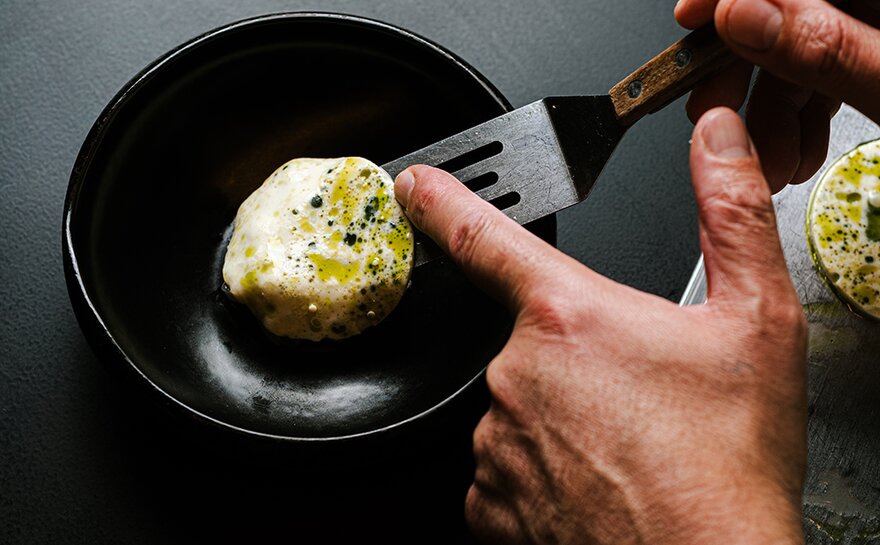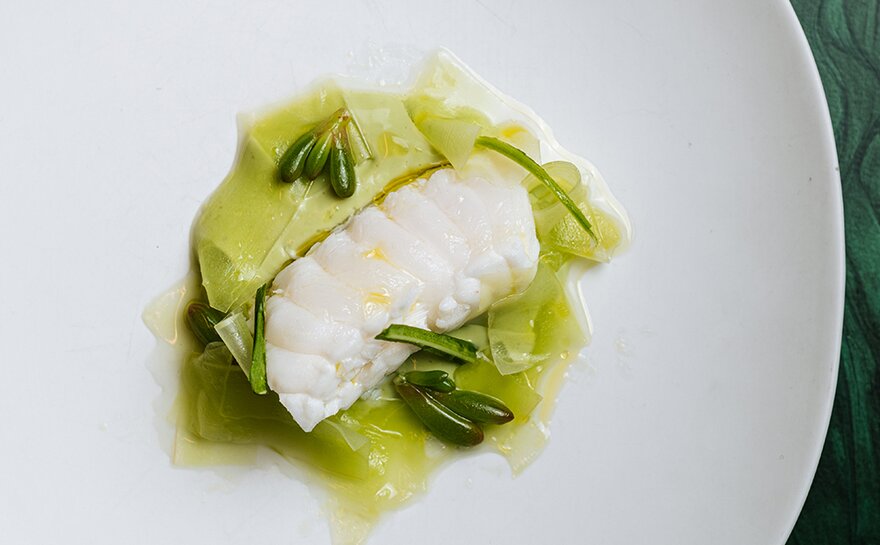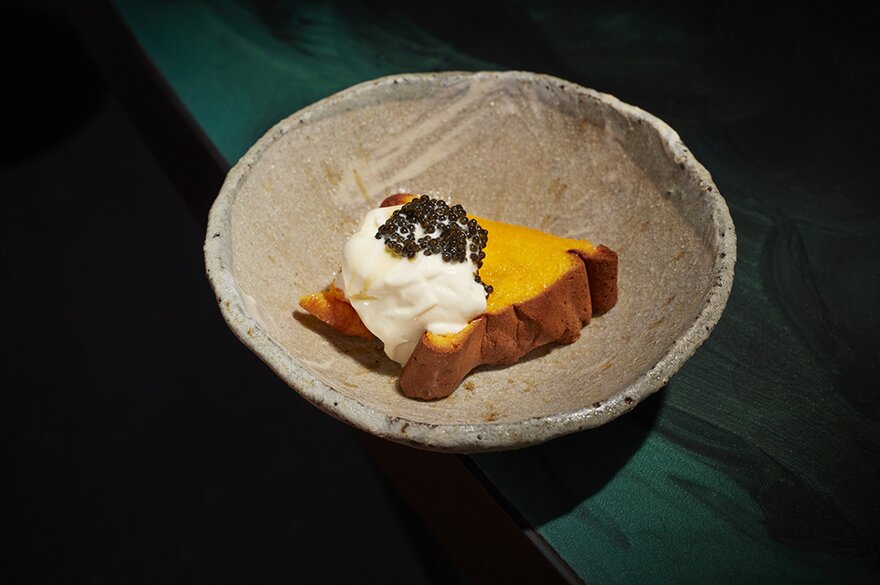No meat is allowed at this piscine-only spot, where chef Leandro Carreira implores guests to open their minds to molecular possibilities
The Sea, the Sea – so good they named it twice. As the name suggests, the chef's table in Hackney is entirely fish-focused. In fact, there's only one dish on the entire menu that doesn't include a fishy element – the palate cleansing first dessert of macerated peaches with sour caramel. Straight after that, guests dive back in for a caviar-topped dessert (more on that later).
"Every dish we put on we try to have some kind of sea component, whether that's seaweed, fish or shellfish," says chef Leandro Carreira. "Since day one we haven't used meat products."
Fish and seafood are the team's bread and butter – they supply more than 100 restaurants with lobster, seabass, turbot and Dover sole. Its Chelsea operation includes a fishmonger, while the Hackney outpost displays its fish dry-aging chambers in its front window, blocks of salt sucking the moisture out of the air.
This technique of dry-aging is a point of pride for Carreira: "I think the benefit can really be seen in the texture and flavour, which is unparalleled. It helps to bring the flavour and umami of a dish together."
The technique is used in an intriguing dish of monkfish with soy salt and plankton. The plankton, gained through new fishing techniques to extract it from the ocean, gives the sauce its green colour, and it's combined with collagen from fish heads for a thicker texture. "It's almost like you're kissing the sea," says Carreira.
Among the mounds of marine life, it's Carreira's Portuguese heritage that provides much inspiration – though he insists that it's simply a "Portuguese seasoning". And although he says he doesn't want to simply take dishes from his country, he's the writer of Portugal: The Cookbook, so how could his vast research not have an impact? Partway through the meal he shows off a special pan usually used to make a dessert called fatias de tomar. It was procured by his parents for the book's photography, and he has repurposed to make the egg cake for the squid dish.
"I love it because we gave a second life to the pot," says the chef. "One half is technology, the other traditional."
On the plate, the dish is made up of two clean-cut rectangles side by side, one orange and one white, together making the perfect width of a fork's prongs when guests take a bite. There's the orange egg cake half, which Carreira has made using togarashi seasoning and seaweed. The white half is a squid frozen mousse, made using a technique created by chef Wylie Dufresne – an American leader in molecular gastronomy. First a mousse is created using squid, olive oil, salt and cream, which is aerated in a food safety box before freezing. When eating, the sweetness of the squid comes through as it melts.
The cake is served with a consommé made with sake and white wine and using the trimmings of the squid to avoid waste – a principle the menu kicks off with as the guests are served a fish broth made with an amalgamation of the day's offcuts. Carreira says this idea – looking at how to use the whole fish – should be automatic when creating a menu.
The courses culminate in the aforementioned caviar surprise, where it sits on a fennel seed ice-cream, drizzled with olive oil, all on top of a Portuguese sponge cake, the pão de Ló.
"It's just a combination of eggs, there's no flour or yeast," says Carreira. The fennel seed ice-cream cuts through the richness of the cake, the saline caviar keeping the flavours carefully balanced on the edge of sweet versus savoury. The core of the chef's table's ethos pivots on the team's desire to experiment, in taking familiar flavours and layering them together.
Huge jars of pickles and ferments line the entryway to the restaurant, some of which are several years old. "We don't know what we're going to do with it when we make it," says Carreira.
For this menu, he pulled a banana miso from the shelf to flavour the trout starter, served on an unusual cracker. To create the cracker, the team makes koji by inoculating rice with mycelium, then, after the culture has grown, it goes into a black garlic machine where it sits for a month at 70°C. It turns dark, which adds chocolate notes, then it's mixed with more unblackened koji to create a fudge texture, which is baked with rice flour to turn it into a cracker.
"We're free, we're really free," says Carreira. "We want to open up your palate and your mind."
From the menu
- Fish broth, pink peppercorn, kombu and fish bones
- Two-week, dry-aged trout, banana miso, blackened koji
- Smoked eel, pão doce, wild onion and garlic capers
- Squid, togarashi egg cake and consommé
- Red prawn, Cheung fun and preserved Miyagawa
- Two-week, fry-aged monkfish, soy salt and plankton
- Lobster bisque and shokupan
- Langoustine, pastry, fried milk and sorrel
- Peach, caramel and mint ice
- Pão de ló, toasted fennel seeds ice-cream and caviar
337 Acton Mews, London E8 4EA













